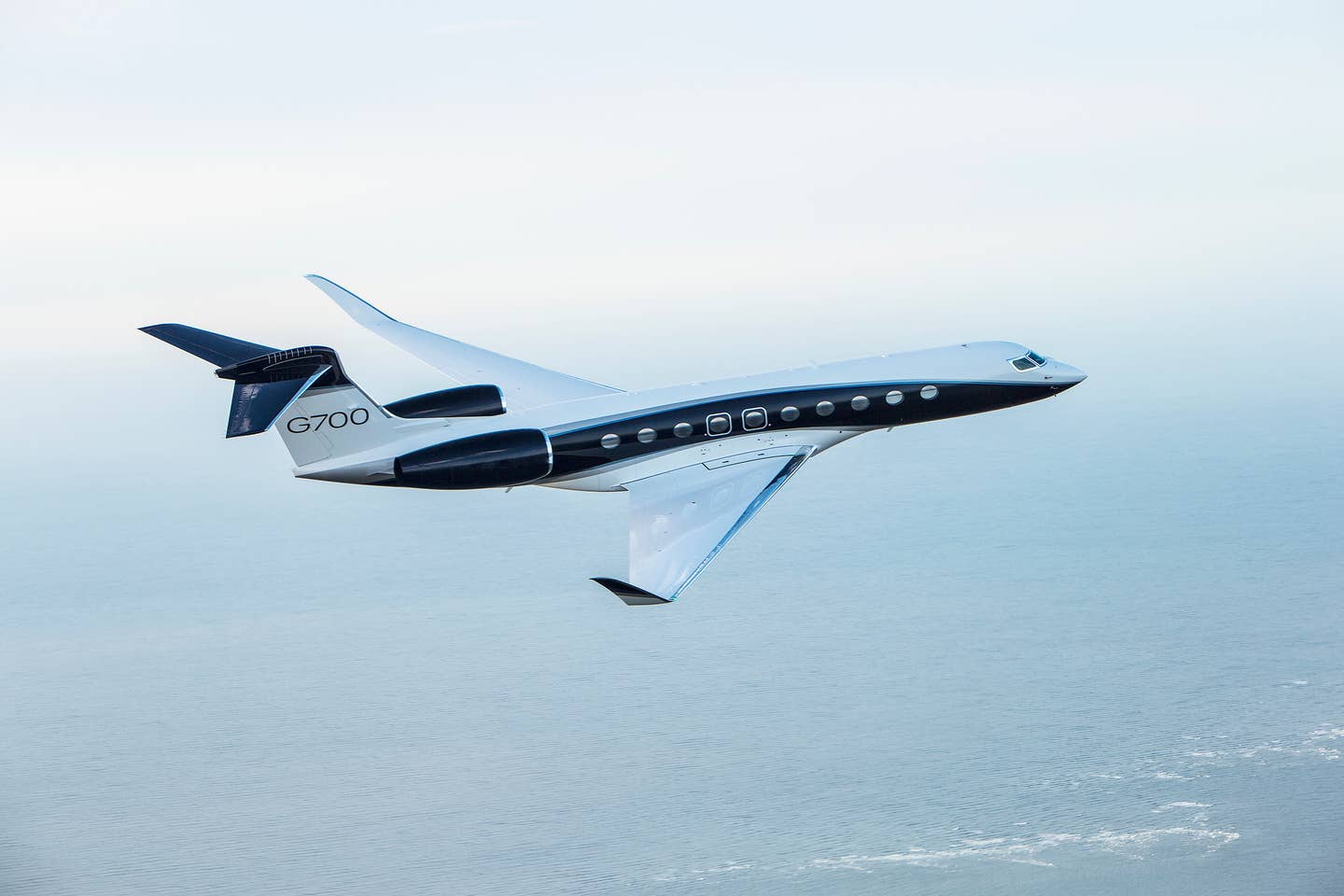Gulfstream G700 and G800 Engines Earn EASA Certification
Advances in development of the Rolls-Royce Pearl 700 engine propel Gulfstream’s next-generation aircraft a step closer to customer delivery.

Gulfstream announced that the Pearl 700 engine being developed to power its next generation of business jets, the G700 and 800, received EASA certification after a series of tests. [Courtesy: Gulfstream]
Gulfstream is showing major progress bringing its new G700 and ultralong-range Gulfstream G800 to market with the announcement that its new Rolls-Royce Pearl 700 engines have achieved European Union Aviation Safety Agency (EASA) certification.
Since first announcing the G700 program in October 2019, and the G800 in 2021, the business jet manufacturer has made key strides in getting those products ready for the market.
According to Gulfstream, the G700 can fly at its high-speed cruise of Mach 0.90 for 6,400 nm or at its long-range cruise of Mach 0.85 for 7,500 nm. Meanwhile, the G800 has a range of 7,000 nm at Mach 0.90 and an 8,000-nm range at Mach 0.85. That would make it the longest range in the business aviation industry, along with Bombardier’s Global 8000, if both achieve their targets.
In a statement, Gulfstream president Mark Burns said achieving EASA certification for the Pearl 700 engines was a “significant step” for the company and brought it closer to delivering the aircraft to customers. When the company announced the G700, even before the pandemic surge in business jet sales, it said Gulfstream had already sold out orders through 2023.
“We are seeing a high level of demand for both the G700 and G800, and they are set to lead the upper end of the ultralong-range distance segment with their unique combination of range, speed, and cabin size,” Burns said.
What’s Special About the Pearl 700 Engine
Following the EASA certification, the company said that Rolls-Royce put the Pearl 700 through a gamut of tests that exposed it to various performance altitudes, and tested both conventional and 100 percent sustainable aviation fuel (SAF). The Pearl 700 also had to demonstrate its ability to withstand bird strikes, ice, hail, and water ingestion and pass a critical fan-blade containment test, during which a fan blade is deliberately released at maximum speed, it said. The engine manufacturer conducted these performance tests in Rolls-Royce locations in Europe and North America. Rolls-Royce is developing the Pearl 700 engine at its Rolls Royce Centre of Excellence for Business Aviation engines in Dahlewitz, Germany.
“Receiving the EASA certification for our Pearl 700 engine makes us very proud, as it illustrates Rolls Royce’s unique capabilities to design, test, build, and certify pioneering aircraft engines,” said Dr. Dirk Geisinger, director of business aviation at Rolls-Royce. “It also reflects the dedication of our global team to support Gulfstream and the entry into service of the G700 and G800. We have worked closely with EASA and Gulfstream to achieve this certification, and I would like to thank them both for their support.”
For pilots, there’s a lot to look forward to. The Pearl 700 produces 18,250 lbf of takeoff thrust, an eight-percent increase compared to the BR725 engine that powers the already capable G650. Moreover, Rolls-Royce said that the Pearl engine was part of its IntelligentEngine vision that augmented engines with digital capabilities.
Upfront, the G700 and G800 both include the Gulfstream Symmetry Flight Deck that has the only electronically linked active control sidesticks in the industry, touch-screen technology, and Gulfstream’s Predictive Landing Performance System. What’s more, Burns said with the advanced Gulfstream wing and new winglets being designed for the two aircraft, flight crews should expect “impressive performance capabilities.” G700 and G800 are being built with high-speed, aerodynamic Gulfstream wing design introduced on the Gulfstream G650 and G650ER.
Other Significant Progress Toward Certification
Earlier this May, the G700 jet set a seventh international city-pair speed record flying the Savannah, Georgia, the company’s base, to Geneva, Switzerland. Gulfstream reported that the trip lasted 7 hours and 37 minutes at an average speed of Mach 0.90 and used 30 percent SAF. Since then, the G700 has set even another speed record.
Then, earlier this month, the company flew a second G700 production-test aircraft. The latest G700 test aircraft includes a “grand suite” and a new lavatory design that includes natural light, a full vanity, and a shower.

Sign-up for newsletters & special offers!
Get the latest FLYING stories & special offers delivered directly to your inbox






